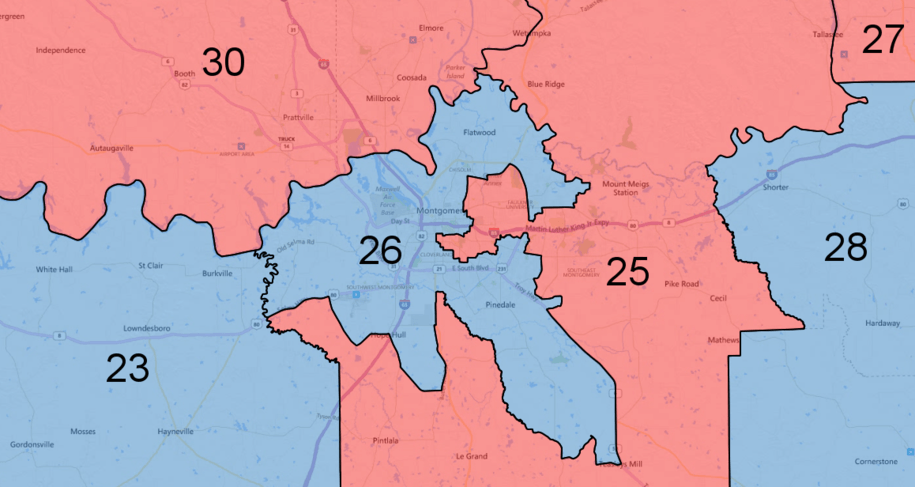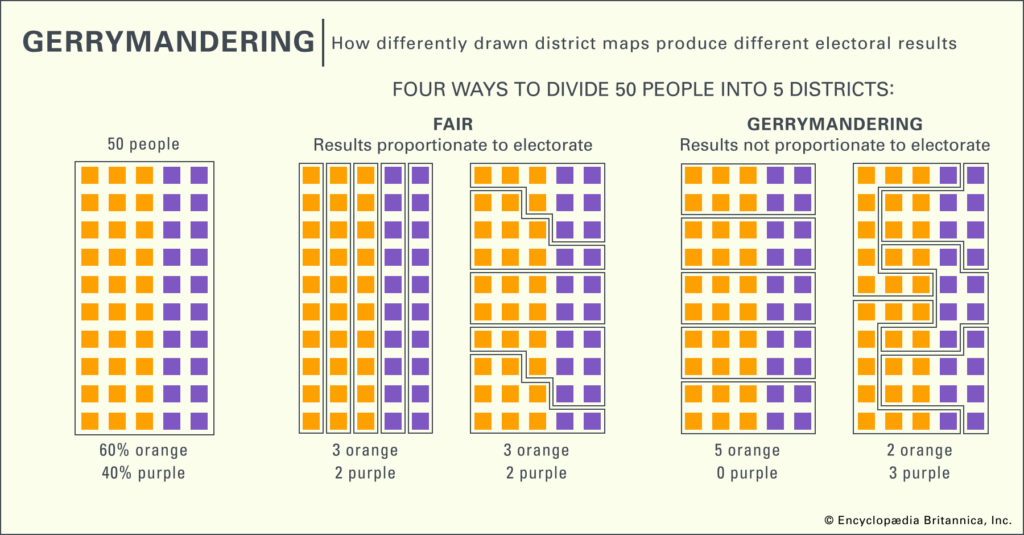


If you live in the United States, you live in a district. All representatives to the U.S. House of Representatives, state legislatures, and many local officials are elected from districts.
The Census measures how population shifts throughout the country. When this data is collected, states are required to redraw their voting district maps, “redistricting,” to ensure equal population. The federal government stipulates that districts must have nearly equal populations and must not discriminate based on race or ethnicity.
The quality of your representation, including the government’s policies, is affected by district boundaries. These districts determine how communities are represented at the local, state, and federal levels. The redistricting process is fundamental in influencing how our government works for us.




Some state legislative districts draw substantial portions of their political leverage from the presence of a large prison in the district instead of voters who reside in those areas.
The districts with large prisons get to send a representative to the state capital to advocate for their interests without meeting the required number of residents.

Prisons are disproportionately built in rural areas, but most incarcerated people call urban areas home. Counting prisoners in the incorrect place results in a systematic transfer of population and political influence from urban to rural areas.
“There are many ways to hijack political power. One of them is to draw state or city legislative districts around large prisons — and pretend that the inmates are legitimate constituents.”
—Brent Staples, American author and editorial writer for The New York Times.
AEPN partner organization T.O.P.S. is actively working on justice and rights for the incarcerated.
Learn more at WeAreTOPS.org.



If you live in the United States, you live in a district. All representatives to the U.S. House of Representatives, state legislatures, and many local officials are elected from districts.
The Census measures how population shifts throughout the country. When this data is collected, states are required to redraw their voting district maps, “redistricting,” to ensure equal population.
The federal government stipulates that districts must have nearly equal populations and must not discriminate based on race or ethnicity.
The quality of your representation, including the government’s policies, is affected by district boundaries. These districts determine how communities are represented at the local, state, and federal levels.
The redistricting process is fundamental in influencing how our government works for us.



Some state legislative districts draw substantial portions of their political leverage from the presence of a large prison in the district instead of voters who reside in those areas.
The districts with large prisons get to send a representative to the state capital to advocate for their interests without meeting the required number of residents.

Prisons are disproportionately built in rural areas, but most incarcerated people call urban areas home. Counting prisoners in the incorrect place results in a systematic transfer of population and political influence from urban to rural areas.
“There are many ways to hijack political power. One of them is to draw state or city legislative districts around large prisons — and pretend that the inmates are legitimate constituents.”
AEPN partner organization T.O.P.S. is actively working on justice and rights for the incarcerated.
With help from our grassroots partners, we are organizing a Redistricting Program. Our program will prioritize public education, outreach, and organizing across Alabama to help get fair and equal representation for Alabamians.
Improving the fairness of our redistricting process will create a more balanced representation. A more reflective representative body will ensure Alabamian’s voices are heard and contribute to determining our policies and priorities.

Providing information and increasing literacy on fair representation, the redistricting process, and gerrymandering. Our chief focus is on educating Alabamians on why these processes matter and how they impact our everyday lives.

Empowering all Alabamians and smaller civic-minded organizations with clear, compelling ways to participate in the redistricting process and ensure their voices are heard.

Exposing the act of prison gerrymandering and explaining how it impacts redistricting and fair representation.
public education and engagement campaigns. We’ll share resources with the public through our website, social media, and traditional media spaces, including radio, TV, the press, and partner organizations.

fair community-drawn redistricting maps. We’ll develop partnerships with core leaders and work with national, regional, and in-state contacts in legislative districts of interest to draft redistricting plans.

with city, county, and state lawmakers. We’ll ensure grassroots organizations’ inclusion in the line-drawing process.

with Alabama’s Reapportionment Committee. We’ll attend all relevant public meetings and monitoring public announcements, notices, and reports by the committee.

with grassroots organizations and faith-based communities. We’ll share our civic engagement strategies by providing our Redistricting Toolkit. We’ll also recruit and train leaders and volunteers on how, when, and where to get involved.

data, facts, and evidence. We’ll use proven statistics to make the case (litigation) for fair representation and more balanced district maps.


Redistricting is the process of drawing boundaries for electoral and political districts in the U.S. and is done every ten years after the census.

When redistricting, state legislatures or redistricting commissions are provided certain specific criteria with which to draw the lines.

Our nation gets just one chance each decade to count its population. The census strives for an accurate count of every resident in the United States.
We’re working to make elections more inclusive, accurate, and accessible.



Time is Up!